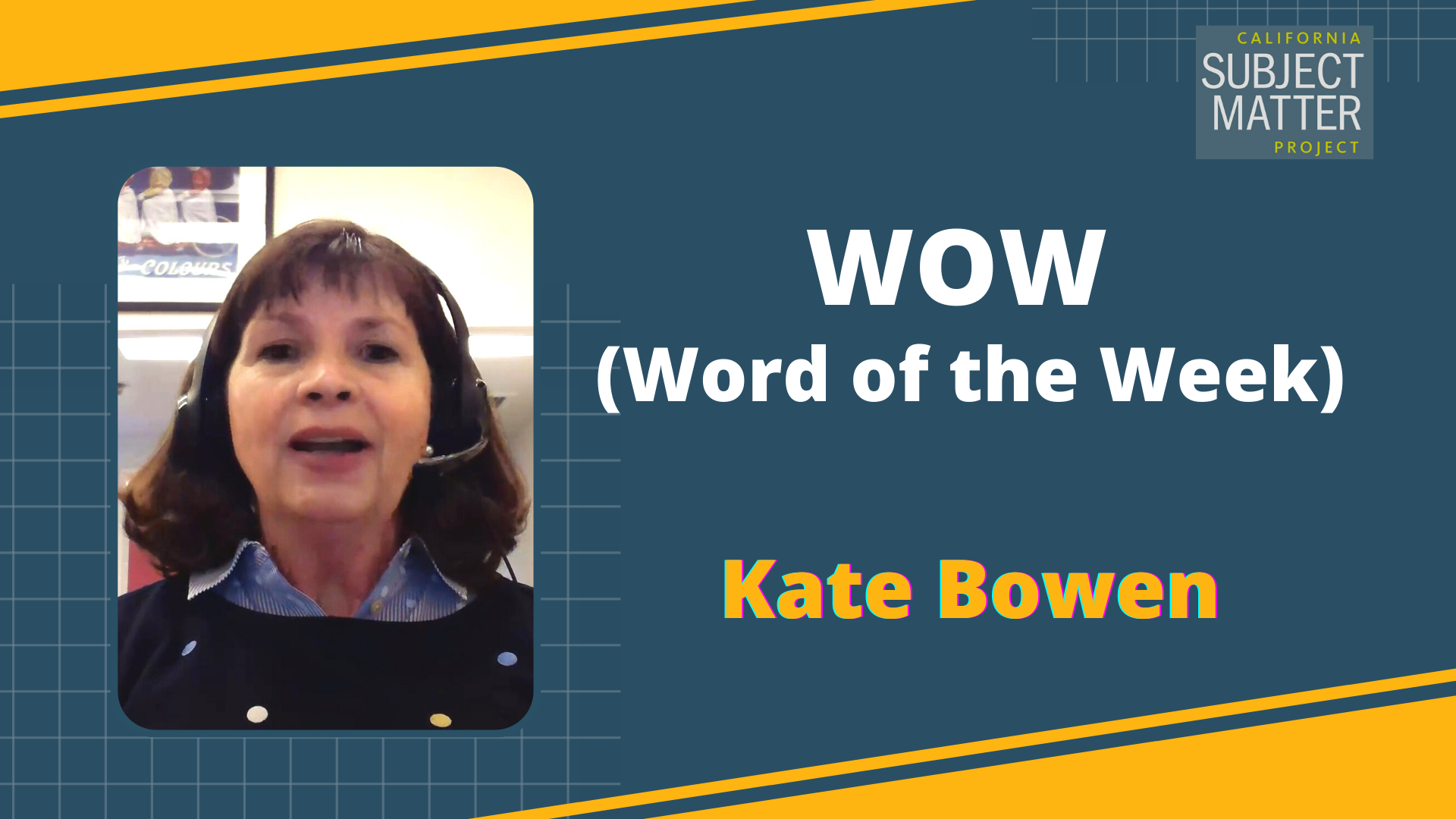Watch the Video
Presenter
Margit Boyesen is a 2nd grade teacher at Cardiff Elementary School District in Cardiff, California.
Transcript
Hi, my name is Margit Boyesen and I’m a second grade teacher at Cardiff Elementary in Cardiff, California. The strategy I will be sharing is called “The Writing Roadmap.” The Writing Roadmap isn’t a rubric, even though at first glance it may seem like one. How often do we hear, “I’m done,” and as a teacher, we know when you’re done, you’ve just begun.
At this point, students have completed their draft and are ready to continue the writing process with revision and editing. The Writing Roadmap is a physical list that guides students in the process. This can be applied across a curriculum: in language arts when writing a personal narrative, in social studies when writing a biography, in science when writing a research report, in math when explaining a concept and more.
When you introduce students to this concept, you can ask students if they’ve ever been to the doctor, and many hands will go up. Respond by saying something like, “when a doctor is giving you a checkup, the doctor has a list of things to check to make sure you’re healthy. You will have a list to check the health of your writing assignment,” or you could ask students if they know what a detective is and invite them to become detectives of their own.
This roadmap can and should be edited to fit the project your students are working on. If they’re working on a personal narrative, you may be looking for storytelling language linking words, details, maybe even dialogue. If students are working on a research report such as an animal or biography report, you’re most likely not only looking for specific facts of the research, but also in an interesting title, starting with an interesting hook or overarching idea, and probably what the student has learned from this research.
Regardless of what is required in this piece of writing, the roadmap can be tailored to the needs of the project. Earlier in the school year, the roadmap will have less requirements, and as the year progresses, the list grows with additional criteria. Also notice that younger grades have less items on their checklist than upper grades, that’s okay and expected.
Possible accommodations for the writing roadmap include reading the roadmap aloud to the whole class when introducing the idea to meet the needs of all the students. Consider adding images to represent certain criteria.
Also consider printing the checklist for each student and saving paper by printing two checklists per page, then you can simply cut and pass it out to students. It is best to review the roadmap before students work independently every writing session. Remind students to take out the roadmap when writing. Consider hanging the roadmap as a poster for you as a teacher to reference throughout your lessons.
It is also good to note that the reality is that some students check things off of the list that they don’t have in the report. That is okay and expected. If you choose, you can have students color code using color pencils on the checklist. And then for each item, the student can choose a color and in their written document, highlight it with that color. This works digitally and on paper as long as students who are working digitally know how to highlight in various colors. Otherwise, a draft can be printed on paper and color coded with color pencil.
It is important to meet with every student over the course of the project, as these one-on-one conversations are vital to the growth in writing. It’s an opportunity to help students add the things they may have checked off on the list, but they actually don’t have in their writing. Meeting with every student takes time and spans across a week or a week and a half.
Students who are waiting to meet with you, they either work on writing their piece, work on checking their roadmap against their writing, or if you are not ready to meet with them because you’re meeting with other writers, but they’re ready to meet with you, have a choice board or other list of activities for them to do while they’re waiting for the writing meeting.
In conclusion, I have found that this writing roadmap helps to manage writing projects. It doesn’t take away all the challenges and it doesn’t make a big project less daunting for you or the students, but it does give them a tool to push past that initial, “I’m done, what do I do?” And it helps the students to hold themselves accountable.
So I hope you give it a try — and good luck ! I know writing projects are not the easiest, but you got this. Thank you.
Accompanying Materials & Resources
- Quick Guide: The Writing Roadmap (PDF – 1 Page)
- Writing Roadmap One-Pager (Google Doc)
- Writing Roadmap One-Pager (PDF)
- Writing Roadmap Rosa Parks Biography (JPG)
- Writing Roadmap Sample Student Roadmap_1 (JPG)
- Writing Roadmap Sample Student Roadmap_2 (JPG)
- Writing Roadmap Sample Student Roadmap_Biography (JPG)
- Writing Roadmap Sample Student Roadmap_Kinder (PDF)
- Writing Roadmap Student Example_Book Review (JPG)
- Writing Roadmap Student Example_Restaurant Review (JPG)



